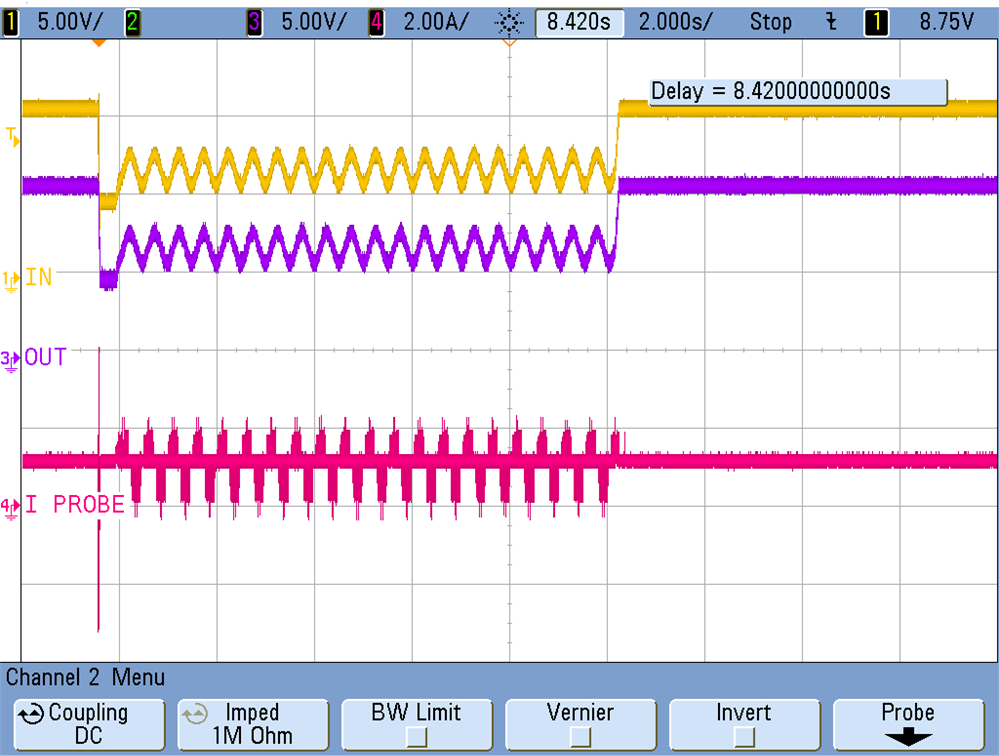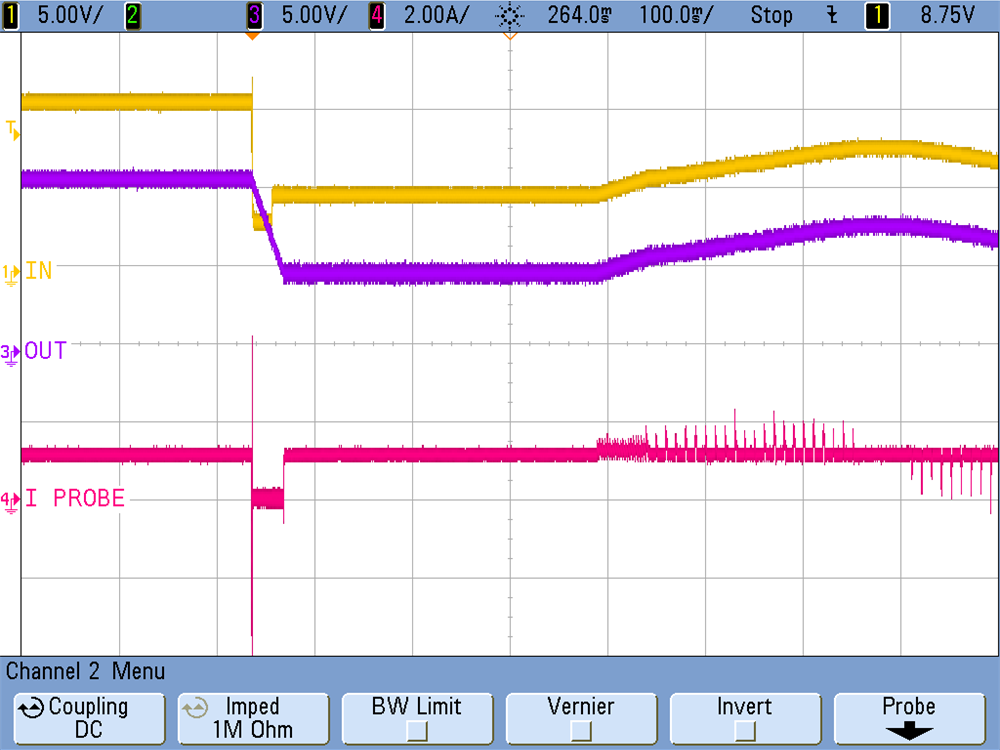JAJU793 October 2020
- 概要
- リソース
- アプリケーション
- 特長
- 5
- 1System Description
- 2System Overview
-
3Hardware, Software, Testing Requirements, and
Test Results
- 3.1
Hardware Requirements
- 3.1.1 Getting Started
- 3.1.2 Testing and Results
- 3.1
Hardware Requirements
- 4Design and Documentation Support
3.1.2.6.3 Cold Start
Cold Start is performed in a similar fashion as the cranking pulse tests shown before. Waveform seen at the input is shown in Figure 3-15. A drop of current is shown in Figure 3-16 as the blocking MOSFET turns off to prevent reverse current from flowing.
 Figure 3-15 Cold Start Waveform
Figure 3-15 Cold Start Waveform Figure 3-16 Cold Start Testing
Figure 3-16 Cold Start Testing